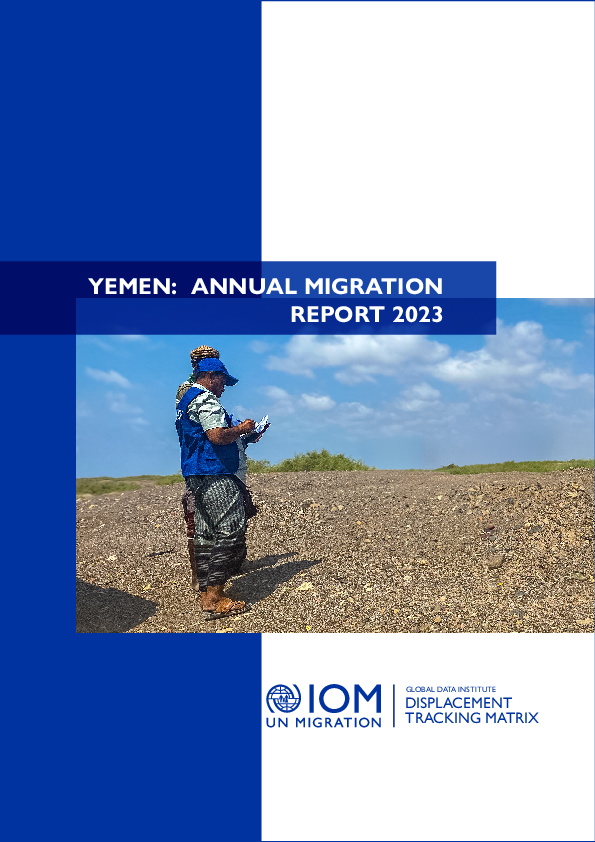-
Countries
-
Data and Analysis
-
Special Focus
-
Crisis Responses
Yemen - Annual Migration Report (2023)

Contacter
DTM Yemen, DTMYemen@iom.int
Langue
English
Emplacement
Yemen
Période couverte
Jan 01 2023
Dec 31 2023
Activité
- Flow Monitoring
Despite the domestic conflict that broke out in 2015 followed by economic decline and institutional collapse, Yemen remains a frequently travelled transit country for migrants.
According to IOM’s DTM Area Assessment Report in September 2023, Yemen hosts over 42,000 migrants across accessible locations in ten of the 12 assessed IRG controlled governorates.6 The majority of migrants living in Yemen came from Ethiopia (88%) in addition to 12 per cent from Somalia and less than one per cent from other countries according to this stock figure. Please note that information on migrant stocks will differ from data on migration flows as migrants tend to remain in Yemen for months to years before moving on to further destinations. In the same year, a total of 96,670 migrants, 79 per cent Ethiopian and 21 per cent Somali nationals, were observed traveling towards Yemen.7
Migration in the HoA continues to be triggered by persistent insecurity and conflict, environmental degradation, harsh climatic conditions, public health emergencies, socioeconomic drivers, and traditional seasonal factors. Recognizing the importance of information about migrants in Yemen and it mixed flows, the IOM DTM team in Yemen aims to report on migration statistics and drivers throughout this report. This Yemen Annual Migration Report 2023 is presenting information on the flow of migrants to Yemen (Non-Yemeni and returnee Yemeni migrants) at transit, departure or arrival points, the profile of migrants who live in various locations in Yemen, challenges faced by migrants, and their intentions.
In light of the above objectives, the report is organized according to the following sections. Following key findings, the first section on flows presents the migrant arrivals (non-Yemeni and returnee Yemeni migrants) and trends. This section also includes the routes they took and drivers. The subsequent section on migrant profiles presents findings on migration networks, migratory drivers, migrant backgrounds, routes and challenges during migration journeys. This section also summarizes information on intentions. The last section on stocks focuses on numbers and locations of migrants living in Yemen and their immediate needs.
